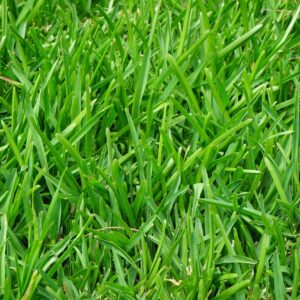Perennial ryegrass (Lolium perenne) in Grass Montana
Description:
- Appearance: Perennial ryegrass forms a dense, fine-textured turf with dark green, narrow leaves. It has a uniform appearance and creates a lush, attractive lawn.
- Growth Habit: Perennial ryegrass has a bunch-type growth habit, forming clumps rather than spreading by rhizomes or stolons.
- Height: Typically grows to a height of 1.5 to 2.5 inches when unmowed, but can be maintained shorter with regular mowing.
- Adaptability: Perennial ryegrass is well-suited for cool climates and thrives in full sun to partial shade. It is often used in overseeding existing lawns to improve turf quality.
Description:
- Appearance: Perennial ryegrass forms a dense, fine-textured turf with dark green, narrow leaves. It has a uniform appearance and creates a lush, attractive lawn.
- Growth Habit: Perennial ryegrass has a bunch-type growth habit, forming clumps rather than spreading by rhizomes or stolons.
- Height: Typically grows to a height of 1.5 to 2.5 inches when unmowed, but can be maintained shorter with regular mowing.
- Adaptability: Perennial ryegrass is well-suited for cool climates and thrives in full sun to partial shade. It is often used in overseeding existing lawns to improve turf quality.
Description
Perennial ryegrass (Lolium perenne) is a cool-season grass known for its rapid germination, lush appearance, and ability to establish quickly.
Description:
- Appearance: Perennial ryegrass forms a dense, fine-textured turf with dark green, narrow leaves. It has a uniform appearance and creates a lush, attractive lawn.
- Growth Habit: Perennial ryegrass has a bunch-type growth habit, forming clumps rather than spreading by rhizomes or stolons.
- Height: Typically grows to a height of 1.5 to 2.5 inches when unmowed, but can be maintained shorter with regular mowing.
- Adaptability: Perennial ryegrass is well-suited for cool climates and thrives in full sun to partial shade. It is often used in overseeding existing lawns to improve turf quality.
Planting Instructions:
- Timing: Perennial ryegrass is best planted in early fall or early spring when temperatures are cooler and soil moisture is adequate. Avoid planting during hot, dry periods.
- Site Selection: Choose a planting site with full sun to partial shade exposure and well-drained soil. Perennial ryegrass can tolerate a wide range of soil types but performs best in fertile, loamy soil.
- Soil Preparation: Prepare the planting area by removing weeds, rocks, and debris. Loosen the soil to a depth of 4 to 6 inches to promote good root growth.
- Soil pH: Perennial ryegrass prefers slightly acidic to neutral soil with a pH range of 6.0 to 7.0. Amend the soil as needed to achieve the optimal pH level.
- Seedbed Preparation: Rake the soil to create a smooth, level surface. Firm the soil lightly with a roller to ensure good seed-to-soil contact.
- Seeding Rate: Perennial ryegrass is typically seeded at a rate of 5 to 7 pounds of seed per 1,000 square feet for new lawns.
- Seed Distribution: Divide the seed into two equal portions and broadcast half of the seed in parallel rows in one direction. Then broadcast the remaining seed in rows perpendicular to the first.
- Covering the Seed: Lightly rake the soil to cover the seed to a depth of about 1/4 inch. Avoid burying the seed too deeply, as it may inhibit germination.
- Watering: Keep the soil consistently moist but not waterlogged during the germination period, which typically takes 7 to 10 days.
- Establishment: Once the grass reaches a height of 2 to 3 inches, gradually reduce watering frequency to encourage deep root growth.
- Mowing: Begin mowing when the grass reaches a height of 2 to 3 inches. Set the mower to a height of 1.5 to 2.5 inches and mow regularly to maintain the desired height.
Maintenance:
- Fertilization: Perennial ryegrass benefits from regular fertilization to maintain its lush appearance. Apply a balanced fertilizer according to soil test recommendations.
- Watering: Provide supplemental irrigation during dry periods to keep the soil consistently moist, but avoid overwatering.
- Weed Control: Perennial ryegrass establishes quickly and competes well with weeds. Hand-pull or spot-treat any weeds that may emerge.
- Thatch Control: Perennial ryegrass lawns typically do not develop thatch buildup, but core aerating can help improve soil aeration and water infiltration.





